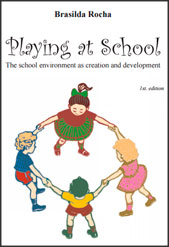

The school environment as creation and development
Brasilda dos Santos Rocha
2016 – 1ª edition
250 pages
Por R$55,00 or U$20
The relevance of this research lies in the contribution made to educators who, in the school environment and social spaces, experience not only a thought but also practical measures, as mediators in the process of child development, thereby making possible some handling of techniques to facilitate this teaching and learning process, and also carrying out its function in a happy and pleasant way.
On reaching the first year of primary school, children are already literate, but are often stripped of their desire in play. This is a savage cut into their infancy, with the removal of a desire that is so necessary, in exchange for the acquisition of the symbolism of reading and writing, something that is done in a way that has a massacring effect.
Our proposal of a way of working is based on Reichian assumptions, based on the core concept of the formula of life, associated to symbolic concepts and the meaning of toys, so that the professional person working within an educational context may have an active role before the person being educated, to direct the flow of energy.
In its several parts and sections, this book explains how and why these techniques of facilitation have created a learning process, aimed at the child and the child’s relationship to the teacher. These two participants could be synchronized, so that this process may occur.
This book presents a work project which is both pedagogical and prophylactic, providing grounds for the basic concepts proposed by some authors, including Melanie Klein, Armida Aberastury, Donald Winnicott, Wilhelm Reich and Brasilda Rocha; it transcribes different forms of intervention and also different practices that could favour learning and also rescue pleasure within the learning process; and presents the results of the intervention processes carried out in six different Brazilian cities.
This book bring a series of detailed illustrations of clarifying cases, and proposes the conclusion that allows us to re-establish play as a form of grounding, due to the fact that each toy has its own energy load and also helps the child to activate healthy content which is inherent to the child’s own process of psychic development.
